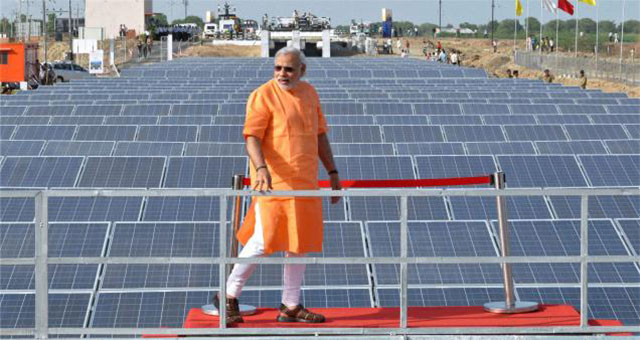
by Siddharth Kumar 6 March 2021
In May of 2020, the Government of India announced a special economic package projected as a relief measure for the COVID-19 induced economic slump. Another announcement was of the move towards an ‘Atma Nirbhar Bharat’ (translates to ‘Self-reliant India’). The idea of Atma Nirbhar or economic self-reliance itself being somewhat vague. It was later clarified that Atma Nirbhar did not mean protectionism or isolation as generally understood, but building the strength of the domestic economy and encouraging domestic production without placing barriers to trade. Insofar as something can be domestically manufactured or produced economically, it is preferred over meeting the same demands from import.
The world was already treading towards increasing protectionism even before the pandemic hit. But its arrival has solidified the nationalist sentiment of internal trade and closed borders, and a more isolated world for protecting national interests, both economic and otherwise. However, officials have stated that India would not embrace de-globalization and will continue to engage in world trade and at multilateral fora.
Yet, when it comes to bringing policies to practice, Atma Nirbhar has been effectively turned into a classic case of import substitution, a theory rejected at least since the 1980s. It is as if policymakers in India have acute amnesia about the country’s own economic and industrial journey. Even today, the scepticism of international trade as the non-zero-sum game remains.
A case can be made of India’s solar industry which is heavily reliant on imports from China with Chinese firms supplying about 80 per cent of solar cells and modules used due to their relatively cheaper prices. In 2018-19, India had imported $2.16 billion worth of solar photovoltaic cells, panels, and modules.
Solar energy tariffs in India are among the lowest anywhere in the world. But the nature of the solar industry means that the investment required and the cost of setting and scaling up a solar plant is huge and spread over the long term. Such dirt-cheap pricing of solar energy is unsustainable for producers and developers who need to resort to cost-cutting measures, which invariably translates to compromise on quality. There are further regulatory issues of environmental clearances, social externalities, land acquisition, and delayed payment by state power distribution companies.
The underlying issue is cost and pricing which has been distorted by government intervention to create a demand for solar power and achieve its target of having 100 GW installed solar capacity by 2022, one of India’s commitments under the Paris Climate Agreement, 2015.
After the announcement of the Atma Nirbhar Package, the government decided to impose customs duties on the import of solar equipment and do away with the existing regime of imposing a safeguard duty. The reason provided was that customs duties are long-term and allow local manufactures to make long-term decisions and investments, compared to safeguard duties, which are temporary. There are further plans for providing interest subvention and offering land near ports for setting-up solar equipment manufacturing. As a part of Atma Nirbhar Bharat, the goal is to end import dependence on all equipment including solar panels.
Such a policy objective not only fails to address the root cause of the problem, i.e., the lack of demand for solar energy and its pricing but also contradicts the stated purpose of the Atma Nirbhar Bharat, which does not include protectionism. It further seeks to achieve multiple objectives, which are often not in consonance with each other — increasing demand to meet installation targets, making energy affordable by keeping tariffs low, and boosting domestic manufacturing by imposing import restrictions.
The demand for solar energy cannot be seen in isolation. For it to increase, it has to be cheap relative to other sources (such as coal), be readily accessible, and have large-scale on-grid connectivity. While solar tariffs can be kept superficially low, coal is a limited natural resource and its price is market floating. While coal is costlier and has negative environmental and health externalities, it is still widely used simply because it is most accessible and easier to produce.
Keeping tariffs superficially low will only drive out competition from the market due to lack of margin in engaging in the business of power production. Only those who survive the bleeding prices will remain and then have no incentive to improve further, which is detrimental to the consumers in the long run.
Despite several incentives, domestic manufacturing will not develop whatsoever, if manufacturers cannot recover cost and earn a profit. Solar equipment is imported simply because it is cheaper to do so.
Instead of distorting the market leading to a lose-lose situation for both producers and consumers, the government should engage in improving the business environment and developing infrastructure rather than providing direct subsidies. For instance, the logistics costs of India are around 13 per cent of total costs, which make its exports uncompetitive. This cost adds up to the total supply chain. Improving hinterland multimodal connectivity to ports may offer better growth opportunities for solar manufactures than providing them land on the port or interest subvention for setting up a plant, as the former has a multiplier effect on all the activities up and down the supply chain not the plant in isolation.
One country’s export does not mean it always loses and trade deficits are not inherently bad things if they help in economic growth and boost domestic capacity. For solar energy to pick up, it should not be deprived of cheaper imports that lower the prices, rather infrastructural changes to create a conducive business environment for domestic production should be made.
